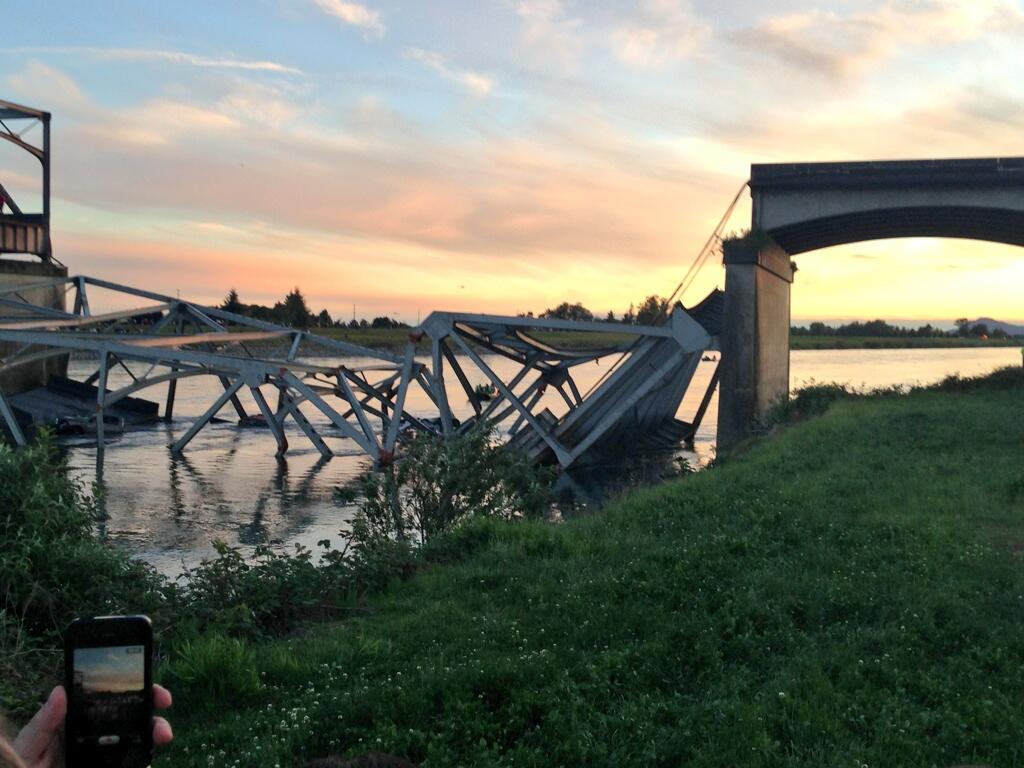On Thursday, May 23rd, the Skagit River Bridge collapsed, bringing down a critical trade link between Canada and the United States.
It may not be surprising, then, that a week latter Canada and the United States gave an official roll-out to the Canada-United States Border Infrastructure Investment Plan (BIIP). (BTB Observer blogs on the roll-out here, and provides a nice link to the actual plan).
Last Thursday, the NYTimes reported on the impact of the collapse to the town of Burlington, WA:
The malls are still open, and the cars and trucks creeping through town day and night along the detour routes are testament that the highway corridor, though temporarily crippled, is still in use. But now the people are not coming to buy, and they are mostly not stopping. The message by the state to avoid the area to help ease congestion, and the news images of stalled traffic and twisted steel, have created a secondary collapse, business and political leaders here said, in a community that was poised this year to finally break through, back to prerecession health.
...
That a 160-foot section of highway bridge could catastrophically fail without causing serious injuries — cars into the river, passengers treated and released — is still a source of head-shaking wonder. About 70,000 vehicles used the half-century-old steel truss bridge every day, and the evening rush had barely ebbed when, around 7 p.m. last Thursday, a truck’s oversize load struck a girder, crumpling the structure in a chain of events still being investigated by federal authorities.
State transportation officials said this week that they are hoping to have a temporary spanin place by mid-June, with a permanent fix later this year. But they also cautioned that the temporary bridge — truckloads of components began arriving this week — will be constrained in its use and capacity, with a reduced speed limit. Detours for oversize vehicles will remain in place for months.
The United States has a D+ infrastructure problem. Perhaps the increased attention of this collapse, and the international attention it brings can ensure, at the very least, vital border crossings are maintained.
In any case, it shows that the Canada-U.S. relationship plays an important and daily role in the lives of Americans and Canadians, alike. And getting Canada-U.S. priority issues done right not just secures economic growth in both nations, and works to protect lives.


No comments:
Post a Comment